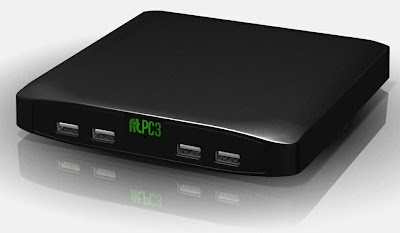Seeing that it stands no chance when competing with quad-core models, Intel has finally decided they need to address the 35W and 17W marks when AMD’s Trinity has proven to be tough to beat.
When it came to anything that involved the iGPU to be put to work, AMD’s Trinity mopped the floor with current Intel Ivy Bridge in Diablo III and in any battery life testing. With the arrival of Intel’s dual-core 17W TDP CPUs, the situation might change for AMD. Intel has launched today four 17W CPUs. The i5-3317U is the first of them and it’s not yet available, nor is it priced yet. The main frequency will be 1700 MHz, but the cores will Turbo up to 2400 MHz when both are needed, or 2600 MHz if only one thread requires the maximum attention. The HD 2500 iGPU is clocked at 350 MHz, but it will Turbo up to 1050 MHz when a 3D application demands more performance.
Here’s AMD’s problem. The Texas-based CPU designer only has a single 17W part in its mobile lineup. That is a dual-core Trinity with only 256 shaders active, and those run in a frequency range of only 327 MHz to 424 Mhz. In very specific scenarios, Intel’s HD 4000 running at more than 1 GHz was able to get very close to AMD’s Radeon 7660G. In AMD’s A6-4455M APU, the iGPU is clocked 35% lower and has 33% less active shaders. Intel's HD2500 is also handicaped as it only comes with 6 processing units instead of the full 16 as in the HD4000. Still the high frequency and the faster memory might help it diminish the gap with AMD's lesser APUs.
On the other hand, Intel’s Ivy Bridge maintains the IPC x86 performance advantage and also retains the full frequency of the HD 2500 iGPU that's running at the same frequencies as in the quad-core mobile parts. Some might argue that, when a 3D application starts, the Radeon 7620 iGPU will run at 424 MHz. It’s good, but that won’t bring back those missing 128 shaders. And 424 MHz is definitely not 686 MHz, as the Turbo clock of the Radeon 7620 iGPU is almost 40% lower than with the famous A10-4600M. The iGPU from AMD’s 17W APU is also working with the slower DDR3-1333 memory instead of the DDR3-1600 memory that A10-4600M is working with.
Intel’s new i5 and i7 Ivy Bridge mobile parts are using the same DDR3-1600 like their quad-core brothers. Even the CPU Turbo frequency is just 2600 MHz on AMD’s APUs while Intel’s i5-3427U can clock up to 2600MHz in dual-core mode, and even 2800 MHz in single-core operation. Clock for clock, AMD’s x86 Piledriver cores don’t stand a chance against Intel’s Ivy Bridge. The only place where AMD has some headroom left is pricing. Despite being built on 32nm manufacturing technology and thus having a bigger die, AMD is not likely to price their APUs at $346 like Intel’s i7-3667U is. That’s about €278 for a 1,000 unit quantity.
Should we add the fact that the unreleased i7-3517U and the 346 bucks i7-3667U come with a larger 4 MB level 3 cache and that the i5 models come with “just” 3 MB? As enthusiastic as we’ve all been about AMD’s A10-4600 APUs, we need to see some detailed reviews about AMD’s lesser APU models and see where that stands against Intel’s overpriced dual-core parts.



 5/31/2012 09:05:00 PM
5/31/2012 09:05:00 PM
 dannzfay
dannzfay













































